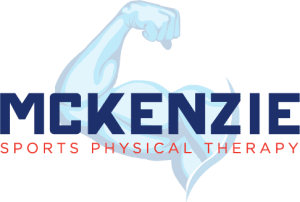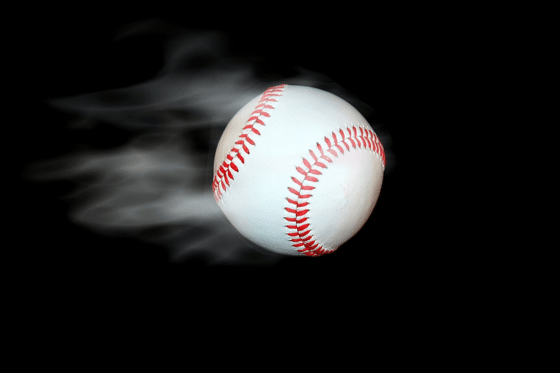When it comes to dominating on the mound, few attributes are as admired—and as pursued—as pitching velocity.
From high school prospects to professional pitchers, the desire to throw harder has become a driving force in modern baseball. While velocity isn’t the only measure of success, there’s no denying its role in intimidating batters, increasing strikeouts, and commanding respect on the field.
But building velocity isn’t about just throwing harder. It requires an understanding of biomechanics, strength training, mobility, and recovery.
In this guide, we’ll break down everything you need to know about increasing your pitching velocity—safely and effectively.
The Mechanics Behind Pitching Velocity
At its core, a fast pitch is the result of efficient energy transfer—from the ground up. The kinetic chain begins at your feet and flows through the legs, hips, core, shoulder, elbow, and wrist before the ball is finally released. If any part of that chain is weak or misaligned, power will be lost, and velocity suffers.
Common flaws that reduce velocity include:
- Poor hip-to-shoulder separation
- Weak lower-body drive
- Arm path inefficiencies
- Early trunk rotation
To increase velocity, you must first master the basics of pitching mechanics. That starts with video analysis, coaching feedback, and targeted drills that improve your body’s sequencing and coordination. Mechanics are the blueprint—get them right and everything else works better.
Strength and Power Development
Pitching is an explosive, full-body movement. Explosive power starts with raw strength, especially in the lower body and core. A strong foundation allows you to push off the mound, rotate efficiently, and deliver the ball with maximum force.
An effective training plan should emphasize:
- Lower body strength: squats, deadlifts, split lunges
- Rotational power: medicine ball rotational throws, landmine twists
- Posterior chain work: hip thrusts, glute-ham raises, kettlebell swings
- Core stability: planks, Pallof presses, anti-rotation drills
But here’s the key: strength is only part of the story. To throw harder, you need to convert strength into power. That means incorporating plyometrics (jump training), sprint work, and explosive lifts like cleans and snatches—all adjusted for your age and development.
Mobility and Flexibility: The Unsung Heroes
You can be strong and have perfect mechanics, but if your body is tight, your velocity ceiling will stay low.
Mobility is what allows your body to get into high-torque positions without compensation or injury.
Without mobility, you’re leaving velocity on the table.
Critical areas to improve:
- Shoulder external rotation: for that full layback at max external rotation
- Thoracic spine rotation: for optimal trunk tilt and separation
- Hip internal rotation: especially in the lead leg to allow proper deceleration and power transfer
Pitchers should implement daily mobility drills before and after throwing—especially during peak season. Consistency with mobility is what keeps your arm healthy and velocity sustainable.
Arm Care and Baseball Injury Prevention
Let’s not sugarcoat this—more velocity means more stress on the arm.
That’s why a proper arm care routine isn’t optional, it’s essential.
You need to take care of your arm like it’s your career. A structured plan should include:
- Scapular stability work: wall slides, band pull-aparts, prone trap raises
- Rotator cuff strength: banded internal/external rotations, ER at 90°
- Forearm training: wrist curls, supination/pronation drills, rice bucket
- Recovery: ice, soft tissue work, active recovery exercises
Pitchers who consistently perform arm care tend to stay healthier longer and continue improving without setbacks.
Ignore it, and you risk becoming another baseball injury statistic.
Throwing Programs and Velocity Training
Now let’s talk about actual throwing. You don’t just pick up a ball and chuck it harder to gain velocity.
There’s a science to velocity development.
The best velocity programs include:
- Long toss: to build arm strength and natural arm path lengthening
- Weighted balls: when done correctly, they train arm speed and movement efficiency
- High-intent bullpens: to transfer gains from training to the mound
- Video breakdowns: to make sure your mechanics evolve, not deteriorate
It’s all about progressive overload. Just like strength training, you add intensity gradually and allow time for recovery.
Too much too fast = injury.
Too little for too long = no gains.
Find the sweet spot and stay consistent.
Nutrition and Recovery
If you’re not eating and recovering like an athlete, you’re not going to throw like one.
Pitching velocity gains are made in the weight room and on the mound—but they’re solidified during rest and fuel.
Make sure you’re:
- Eating enough protein to repair muscle (around 1g per pound of bodyweight)
- Prioritizing carbs to fuel high-performance training
- Getting plenty of hydration—especially during long days at the field
- Sleeping 8–10 hours per night. Yes, really. That’s where your body adapts.
Recovery tools like massage guns, compression, ice baths, and mobility work are great—but none of them matter if your sleep and nutrition aren’t on point.
The Mental Game of Pitching Velocity
Building velocity isn’t just physical—it’s mental.
You need to believe in the process, trust your training, and stay locked in when the gains slow down.
Because they will. And that’s when most pitchers give up.
A few mental tips:
- Set process goals, not just velocity goals (e.g., increase lead leg block force)
- Practice visualization and intent before every bullpen
- Track your progress weekly and celebrate the small wins
- Remind yourself: this is a marathon, not a sprint
When you stay consistent, velocity climbs. But the mental discipline to train when it’s hard? That’s what separates the good from the great.
Final Thoughts
Pitching velocity is more than just arm speed. It’s about mechanics, strength, mobility, intent, nutrition, and recovery all working together. There’s no shortcut—but there is a smarter path.
Commit to the full process, stay coachable, and surround yourself with people who know how to guide you.
If you’re ready to train like a high-performance athlete, we’d love to help.
Free Baseball Assessment – This Month Only
This month, we’re offering a Free Baseball Performance Assessment for athletes who want to take their game to the next level.
This isn’t just a generic screen—we’ll assess your throwing mechanics, mobility, strength, and injury risk to create a plan built just for you.
Whether you’re chasing 90+ mph or just want to throw pain-free, this is your next best step.
Spots are limited—reach out today to reserve yours.


